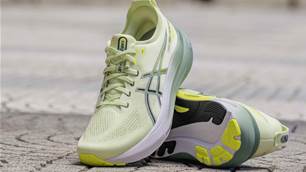How the sub-two-hour marathon project, and the rest of the elite marathon circuit, looks to a runner who finished all six big-city majors last year (and ran as Elvis!)
For the first part of this story, click here.
American Mike Wardian competed in the Boston Marathon last Monday, a race that has special significance for him. The event first motivated Wardian to run marathons, which he did in 1997: “It’s my 20th anniversary.”
The Boston Marathon has become iconic for reasons beyond running – a fact underlined this year by feminist hero Kathrine Switzer’s return to the race after 50 years. But the oldest of the big city marathons is also peculiar in that it doesn’t qualify for the official record over the 42km standard.
The reason is the drop in elevation from the start of the Boston course to its finish, as well as its point-to-point layout. Kenya’s Geoffrey Mutai won in 2011 (pictured above) with the fastest ever time over a marathon distance, 2:03:03, but the mark wasn’t recognised.
Wardian finished sixth in the 40 to 44-year-old category this year, with a time of 2:27:35. He is a cult figure in the world of distance running, having set all kinds of weird and wonderful marathon records, including on a treadmill, while pushing a stroller and dressed as Elvis.
He’s able to do this, because Wardian runs more than two dozen marathons (or longer events) year. He ran all six majors (Tokyo, Boston, London, Berlin, Chicago and New York) in 2016, setting a new record for cumulative time. For good measure, he also competed in the World Marathon Challenge, finishing each of the seven marathons on seven continents in seven days under three hours.

“So many people don’t race as much as I do,” he says. “They take it so serious – they only have two races a year. If I was racing twice a year, it would be different.”
Wardian knows novel record attempts, which gives him an insight into Nike’s attempt to break two hours under controlled conditions at the auto racing circuit at Monza. “Most of the guys are in races where there’s pacemakers, so it’s almost the same, really,” he says. “They’re going to have, like, a car pacemaking them and giving them special fluids, and it’s going to be downhill.”
Wardian had been on a panel with US Olympian Ryan Hall when the subject came up. “We had an interesting talk where he said if they wanted to do it, the easiest place to do it would be on a treadmill. You could lock in the pace, cut out the wind resistance, control the environment too with the temperature and make it a little colder so you’re not sweating as much.
“From doing the 50k record on a treadmill, it’s nice to have fluids whenever you want, TVs with your kids’ pictures – whatever you need to get fired up for the effort.”
Wardian, who has a personal best of 2:17, agrees that breaking two hours will have a significant psychological effect: “Once somebody does it, like the four-minute mile, which now happens in high school.
“I think it’s a matter of time. But it’ll take a special athlete, and I hope that athlete is above-board when it happens.”















